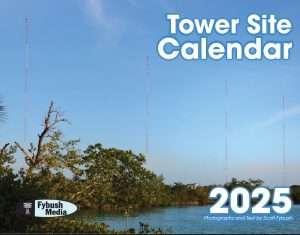Site of the Week 1/14/2022: WKHK, Richmond VA
Text and photos by SCOTT FYBUSH
When you have the reputation of being “that tower guy,” you end up getting a lot of questions from friends (and sometimes strangers) that all have a common theme:
“Hey, I drove past this tower just now… what was it?”
One site seems to draw that reaction more than any other, and that’s the four distinctive top-hatted towers of WPAT (930) just off the Garden State Parkway in Clifton, New Jersey. (We’ve never been inside that site, believe it or not!)
But there are others that seem to get that question on an unusually frequent basis, and one of those is this week’s Site of the Week. If you’re driving on I-95 just south of downtown Richmond, Virginia and you have an eye for the towers you’re passing, it’s hard to miss the two guyed towers with prominent FM antennas that sit just west of the highway and just south of the VA 150/895 interchange.
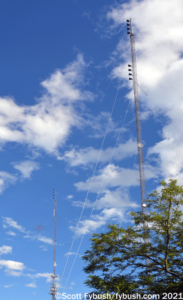
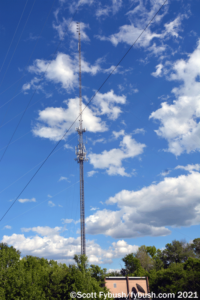
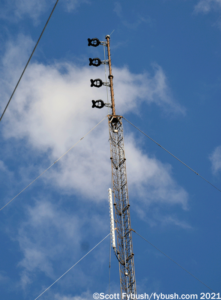
These towers tell a story of the lengths that broadcasters went to in the 1980s and 1990s to bring FM signals from outlying areas into some of the larger markets that were widely viewed as being “under-radioed,” at least on the FM dial. Richmond certainly qualified as one of them: at the dawn of the 1990s, you could just about count the full-market commercial FM signals here on one hand.
The Docket 80-90 expansion of FM service brought some new class A and B1 signals to the dial, as did the sale of a longtime noncommercial signal on a commercial channel (more on that next week). But before those all happened, one outlying broadcaster was on a lengthy path to become a full Richmond signal, a path that would lead to these two towers between the railroad tracks and I-95, where it’s now WKHK (95.3), the top-rated country station known as “K95.”
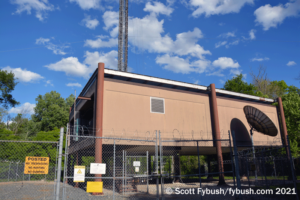
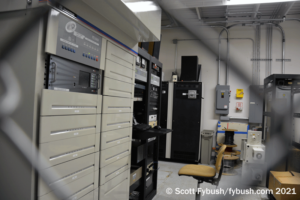
With the help of veteran Virginia engineer John Heimerl, we can piece together all those steps for you. What’s now K95 started 20 miles to the south in Petersburg, where class A WPVA-FM signed on in 1972 on 95.3 as a typical small-town signal, mounted on the top of the WPVA (1290) tower in a low-lying area where it didn’t send much signal at all north to Richmond.
The early 1980s found WPVA-FM on the move north, changing its city of license to Colonial Heights and its transmitter site to a new self-supporter right off US 301 near the top of the ridge that separates Petersburg from Richmond. The WKHK calls and country format arrived in 1984, fresh from previous duty on 106.7 in New York City, where “Kicks” gave way to “Lite” WLTW.
That self-supporter still stands, but these days it’s home to a sister station to today’s WKHK – classic rock WKLR (96.5), which moved into the Richmond market some years later from Williamsburg to the east.
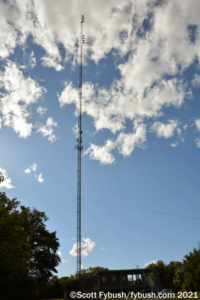
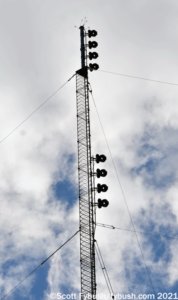
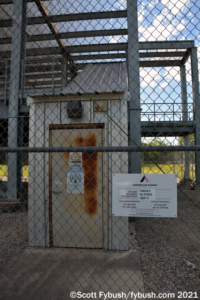
By the 1990s, WKHK was on the move again. Docket 80-90 and the creation of the new class B1 provided the station with a small hole to move all the way into Richmond. That little allocation area turned out to be mostly industrial land, with the most suitable spot for a new tower in a flood plain near the railroad tracks.
The first of the two towers here went up, 540 feet tall, with a big building (designed for other tenants, including cellular, two-way and LPTV) up on 15-foot pillars to keep it dry. Original WPVA owner Alan Brill sold to ABS Communications, whose partner Ken Brown established Token Tower to bring tenants and rental income to the site.
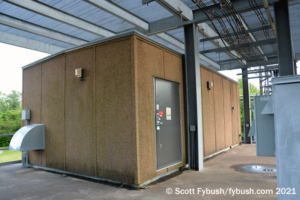
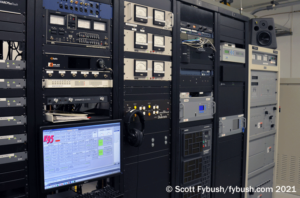
Why a second tower? Because after the turn of the century, WKHK was able to go from class B1 to class B, requiring more antenna space (and yielding more room for rentals, too!)
The beefy new 640-foot tower came with a new transmission facility, too: an elevated galvanized steel platform topped by a steel ice shield, with space for multiple prefab buildings in between and an enclosed, secure stairway leading up from ground level.
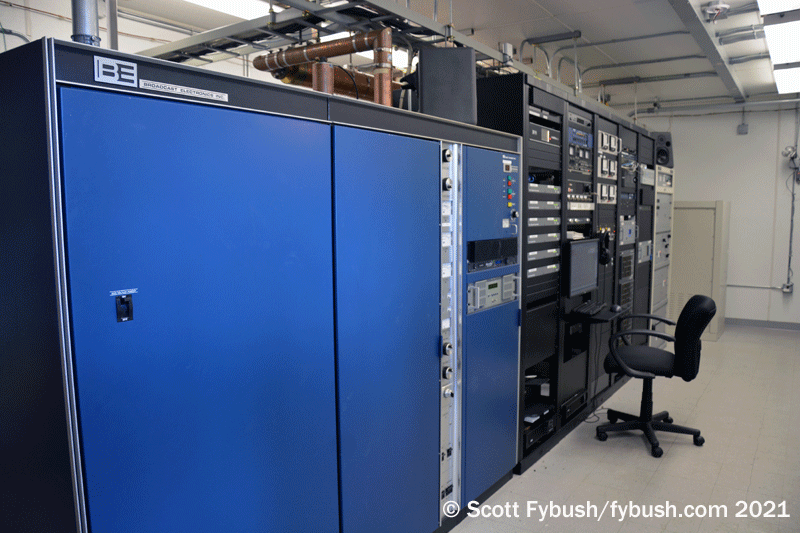
A visit today to this site (now owned by American Tower) finds WKHK (now owned by Summit) occupying space at both towers on the site. Up the stairs in the original building, we find the old class B1 facility, now relegated to aux use – and with the ability to be frequency-agile as an aux for sister WKLR as well, should the need arise. There’s some LPTV gear in here, too, and some two-way tenants.
Walking over to the new building and up to the platform, we find the main WKHK facility filling one of those prefab aggregate buildings: there’s an older blue BE as a backup, a somewhat newer Harris main at the opposite end, and a smaller Harris HD transmitter sandwiched in the middle of this very clean, well-designed room.
It’s a long way from the class A days in Petersburg – but a good one for country listeners in Richmond and for the engineers and owners who’ve been busy improving the signal and facilities over the decades.
Thanks to John Heimerl for the history, to Mike Friedman for the tour, and to engineers Tony Diggs, Jon Bennett and Dennis Sloatman for their work building and maintaining this site!
SPRING IS HERE…
And if you don’t have your Tower Site Calendar, now’s the time!
If you’ve been waiting for the price to come down, it’s now 30 percent off!
This year’s cover is a beauty — the 100,000-watt transmitter of the Voice Of America in Marathon, right in the heart of the Florida Keys. Both the towers and the landscape are gorgeous.
And did you see? Tower Site of the Week is back, featuring this VOA site as it faces an uncertain future.
Other months feature some of our favorite images from years past, including some Canadian stations and several stations celebrating their centennials (buy the calendar to find out which ones!).
We still have a few of our own calendars left – as well as a handful of Radio Historian Calendars – and we are still shipping regularly.
The proceeds from the calendar help sustain the reporting that we do on the broadcast industry here at Fybush Media, so your purchases matter a lot to us here – and if that matters to you, now’s the time to show that support with an order of the Tower Site Calendar. (And we have the Broadcast Historian’s Calendar for 2025, too. Why not order both?)
Visit the Fybush Media Store and place your order now for the new calendar, get a great discount on previous calendars, and check out our selection of books and videos, too!
And don’t miss a big batch of Richmond IDs next Wednesday, over at our sister site, TopHour.com!
Next week: VPM/WCVE and Richmond’s TV master site

